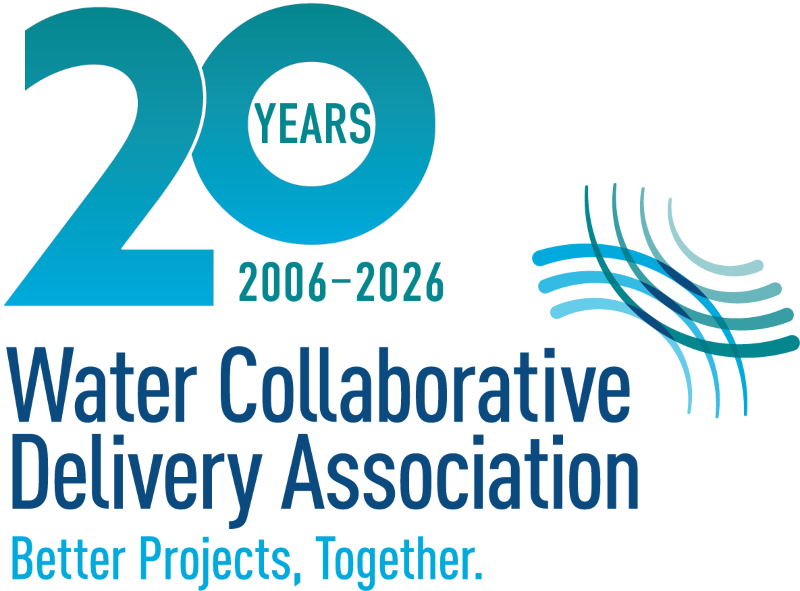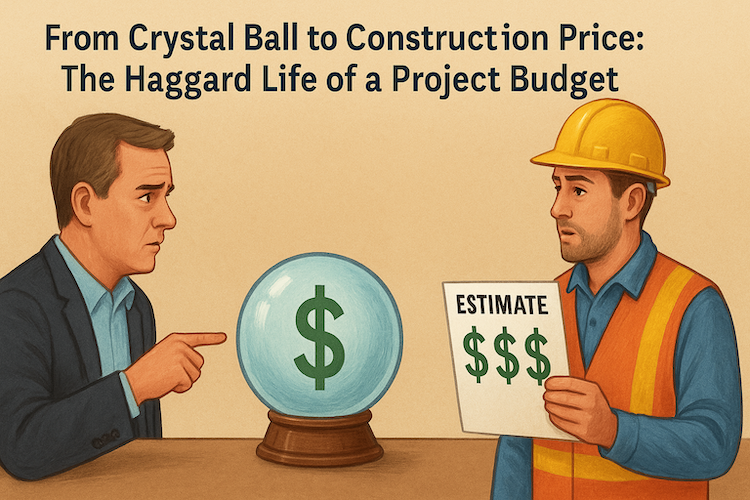Let’s talk about project budgets—the mysterious, battered creatures that journey from a high-level Capital Improvement Plan (CIP) line item to a guaranteed price on a progressive design-build (PDB) contract. If you’ve worked in the water/wastewater space, you’ve likely met one of these beleaguered budgets. Maybe you’ve even created one. (It’s okay. This is a safe space.)
What follows is the cautionary tale of how a well-intentioned number becomes a political football, a math experiment, and finally, a painful source of tension between utility owners and design-build teams. Buckle up. This is the story of a budget that just wanted to be understood.
Chapter 1: Birth of a Budget – The CIP Crystal Ball
Our story begins in a distant conference room where spreadsheets go to die. Here, staff huddle over tables, staring at a list of needs longer than a pre-Thanksgiving grocery store receipt. They must assign budget figures to dozens—sometimes hundreds—of future projects, most of which are defined with all the precision of a napkin sketch.
With minimal scope definition and even less design, someone (likely armed with industry averages, tribal knowledge, or last year’s guesstimate) assigns a round number. Maybe it’s $45 million. Maybe it’s $75 million. Maybe it’s “whatever fits into this rate model.” And just like that, the budget is born.
No one knows exactly where the number came from, but it’s now gospel. It finds its way into long-range plans, presentations to elected officials, and, perhaps most fatefully, the financial model that sets customer rates.
Chapter 2: Political Tightropes and the Fear of Sticker Shock
At this point, our innocent little budget becomes a hot potato.
You see, public utilities aren’t just managing infrastructure—they’re managing public trust. And nothing spikes blood pressure at city hall quite like a headline that reads: “Sewer Plant Project Now Twice the Original Estimate.”
Even if the original number was a placeholder with no basis in reality, once it’s been blessed by the CIP gods and embedded into rate studies, it becomes untouchable. Any attempt to update it (accurately, responsibly, transparently) becomes a game of political chicken.
Staff may know the budget needs to go up. But communicating that to ratepayers, boards, or councils? Risky. So instead, they quietly slap on 5-10 percent every so often for escalation and pray for favorable bids. The result? A budget that grows but remains untethered to any resemblance of the actual scope, market conditions, or cost.
The budget hasn’t just aged, it’s calcified. And now it’s holding everyone hostage.
Chapter 3: The Secret Estimate – A Strategy That Backfires
Fast forward to procurement. The utility is gearing up to issue an RFQ or RFP for a progressive design-build project. A big question arises: “Should we share our internal estimate?”
“Of course not,” says conventional wisdom. The thinking goes, “If we tell them the number, they’ll anchor to it. Better to keep it close to the vest and see what they come back with in Phase 1.”
Here’s the problem: The silence around the owner’s estimate doesn’t save money—it sows confusion. Teams come in trying to gauge the scale of the project based on vague scope descriptions, recycled planning reports, and the tea leaves left behind in old master plans. Without a target budget—or at least a clear explanation of what was assumed—they’re flying blind when developing their understanding of project constraints.
What starts as a tactical “let’s not bias the proposers” strategy becomes a long-term problem. The owner selects a design-build team, and only after the ink is dry does everyone start comparing notes on what they thought the project was going to cost.
Spoiler: It’s often not the same number.
Chapter 4: The Design-Builder Gets to Work – and So Does the Reality Check
Now the fun begins: Phase 1.
This is where the PDB team rolls up its sleeves and works side by side with the owner to refine the design, evaluate options, identify risks, and eventually develop a guaranteed maximum price (GMP).
This is also where the budget (remember that poor soul from Chapter 1?) gets dragged into the light.
The design-builder starts assembling a conceptual estimate based on real scope, market-tested costs, risk profiles, escalation curves, supply chain realities, and labor availability. It’s a rigorous, thoughtful process… and it often produces a number much higher than what’s been sitting quietly in the CIP for the past six years.
Suddenly, the owner is stunned.
“Wait, what do you mean it’s 30% higher? Are you inflating the price? Can’t you just sharpen your pencils?”
But here’s the truth: The estimate is not inflated. It’s just… real. The issue isn’t that the design-builder’s estimate is too high. It’s that the original budget was never grounded in anything but optimism and round numbers.
Chapter 5: The Great Reckoning – Trust Wobbles, Scope Shrinks
At this point, everyone’s feeling the pressure. The owner is caught between its staff, its board, its ratepayers, and its now-crumbling budget assumptions. The design-builder is trying to be collaborative but is stuck explaining why steel prices don’t care about old financial models.
And so begins the awkward dance of value engineering (VE). Only in this case, VE doesn’t mean thoughtful tradeoffs—it means chopping scope, deferring features, or quietly eliminating the stuff that made the project visionary in the first place. The progressive design-build model, which was built for partnership and creativity, starts to look a lot like traditional design-bid-build: reactive, strained, and cynical.
And here’s the worst part: It could have been avoided.
If the estimate had been shared and discussed earlier—even as a draft or directional figure—the design-builder could have collaborated with the owner from the start to prioritize, phase, or recalibrate the program. Instead, they’re now retrofitting reality to a fiction.
Final Chapter: Be Honest About the Budget’s Journey
Let’s end where we began—with our haggard little budget. It’s been through a lot: conceived in uncertainty, inflated with guesswork, hidden for strategic reasons, and finally judged against the cold, hard reality of actual design and market pricing.
But here’s the thing: The budget didn’t fail. What failed was the belief that it was ever more than a rough placeholder—a belief that persisted for too long without the scrutiny it deserved.
And that’s where progressive design-build can actually be the hero of this story—if the owner is willing to be transparent about the budget early. Because unlike traditional models, PDB is built for navigating uncertainty. It thrives on open communication, shared risk, and trust. When owners are up front about their budget—warts and all—it allows the team to:
- align scope and ambition with real resources,
- prioritize early design decisions based on value and risk, and
- develop a price that reflects what the project can be, not just what it was hoped to be.
Transparency doesn’t anchor prices—it anchors collaboration. It says to your design-build team, “Here’s what we’re working with. Help us figure out how to make it work.”
That’s not weakness. That’s leadership.
So next time you’re tempted to keep the estimate under wraps “just to be safe,” remember: There’s nothing riskier than a number no one understands until it’s too late.
And if you’re still unsure about sharing your budget in the RFQ or RFP, ask yourself, “Would I rather have tough conversations early—with options and time to solve problems— or have them later, when the only solution left is cutting scope or killing trust?”
Choose early. Choose clarity. And give your budget the redemption arc it deserves.

